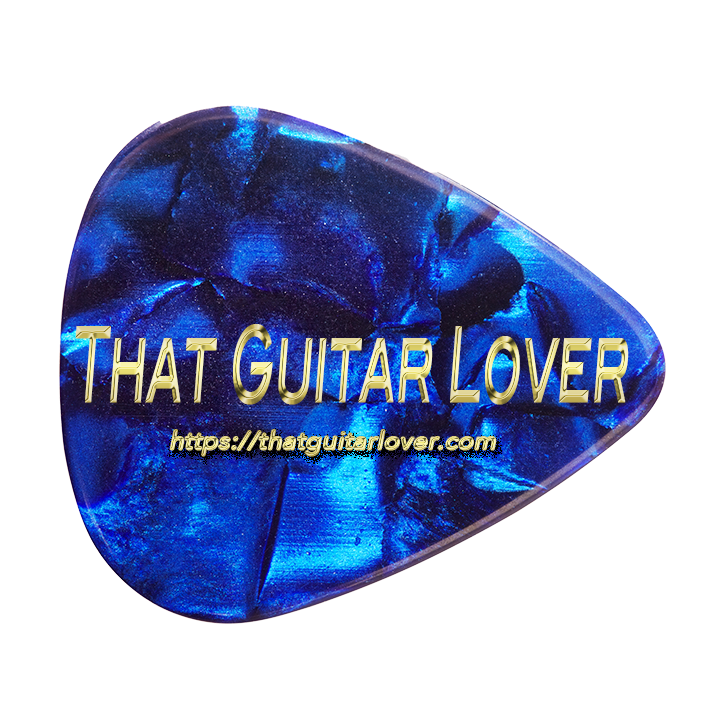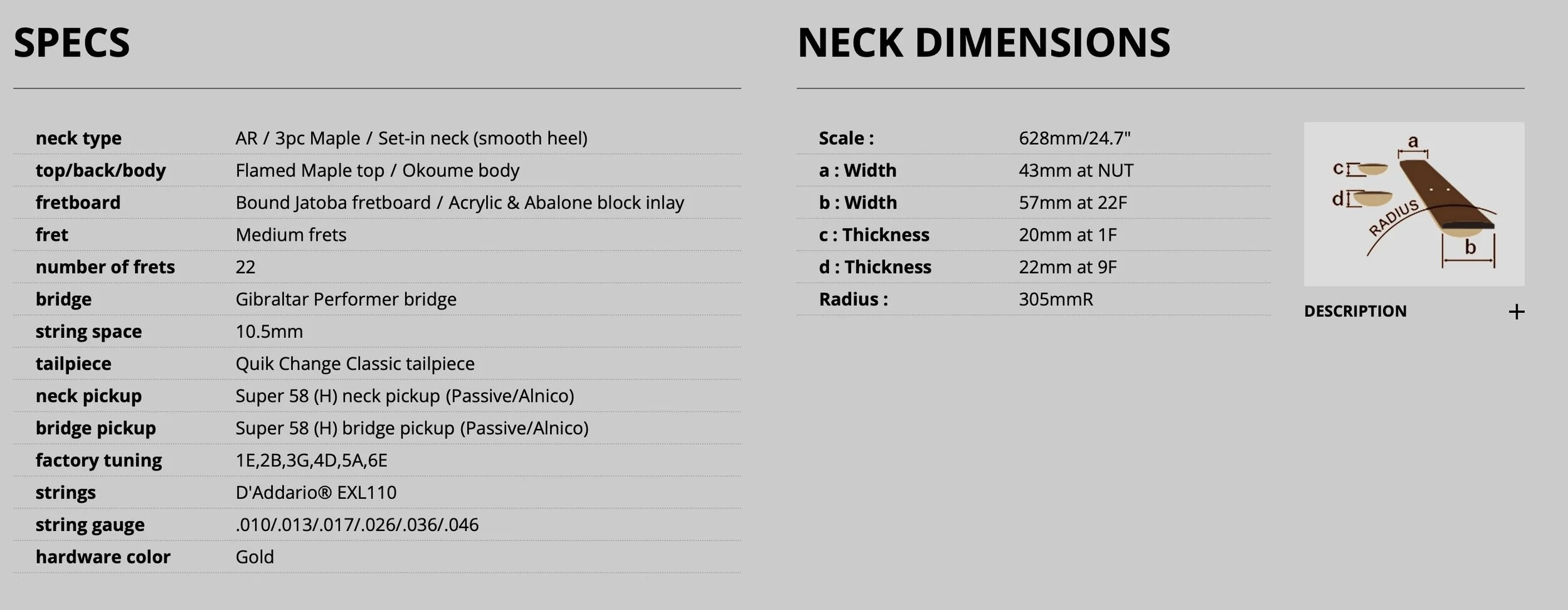Ibanez AR420
Back in the 1970s, I first encountered the Ibanez Artist guitar. This was when Ibanez was still making copies of other maker’s guitars in addition to their own designs. The first artist that I saw playing an Ibanez Artist was Steve Miller. It was vaguely similar to a Les Paul double cut but a bit smaller. The finish at the time was a beautiful amber burst and had really elegant inlay work and gold fittings. It looked very rich and sounded really good in the ways that a traditional two humbucker, 3 way switch, 2 volume 2 tone guitar should.
Leap ahead nearly five decades and the Artist series persists. It’s certainly not so well known as the shred machines that Ibanez has become famous for and its neck is the antithesis of the Wizard skinny flat necks. I’m ok with that and you might be as well. I was able to obtain the AR420 for review with the support of The Arts Music Store in Newmarket Ontario Canada. Please consider shopping with them.
Specifications
I’m using the specifications directly from Ibanez
First Impressions
The very first thing I noticed about the guitar is how darn lightweight it is. Compared to a Les Paul it is MUCH lighter and less likely to cause fatigue or pain if you are wearing it for hours. The scale length feels like a Les Paul or standard Gibson. The neck is a nice C shape, not chunky, but not a thin piece of board either. It’s a set neck and the connection to the body is completely smooth. The double cut makes the guitar comfortable to play when you get up to the higher frets, but like a Les Paul there is no further relief in the cutaways. It is a real maple top, not a veneer and the Okoume body has nice resonance while staying very lightweight. The fretboard is the often used Jatoba. Jatoba comes from Central and South America and is sometimes erroneously called cherry due to its reddish brown colouring. Jatoba is very dense and incredibly hard and makes a superb choice of fretboard wood that is very durable and still relatively inexpensive. I have heard in the past criticisms of the colour, but if it really bothers you, consider applying a few coats of Monty’s dark Instrument Food as Jatoba takes stain very well. The inlays are abalone and look terrific. No mother of toilet seat here.
There are 22 medium frets that are excellently finished and while there is minor fret sprout on the model that I have, it’s not enough that you will feel it unless you go hunting for it.
The tuners are respectable but not high end on this version of the AR series. The pickups are Ibanez’s own Super 58 series which are a lower wind humbucker. They generate a lovely clean tone, but have enough oomph to push an accepting preamp into a really smooth and creamy overdrive.
The guitar came strung with D’Addario EXL 110s an excellent basic string in 10-46 gauge. It is perfectly playable, although if it were mine, I would replace them with a set of my own Curt Mangan Signature coated 8.5 set.
The fit and finish on this guitar, that is made in China, is excellent with no flaws or issues found. The gold finish on the hardware is very good although owners will want to wipe it down before putting away as gold plate is thin and susceptible to wearing from perspiration acids. The use of a good polish or wax on any guitar provides reasonable protection.
This guitar is the Standard model, that is as noted is made in China. The AR420 is available in the faded blue pictured, and a light amber burst. There is a black version AR520H that is semi hollow and and a solid version AR325QAin dark brown burst with a highly figured maple top. The final version is the AR520HFM which is available in amber or blue burst, semi-hollow. The semi-hollow versions move the pickup micro switches and have only one volume and one tone control. Other than this, the specifications for the different variants are the same.
I found the control layout very comfortable and prefer this location for the microswitches over where they live on the semi-hollow versions. The knobs are the same as on my early 70’s John McLaughlin Artist Doubleneck, large and with a thin rubber ring that makes control manipulation quick, smooth and delivering fine movements.
Pickups and Switching
As mentioned, the Super 58s are a lower wind pickup with Alnico magnets. Ibanez does not specify which Alnico is used in the pickups. I might guess Alnico II given the apparent target sound, but please note that this a guess. The point is that they sound really good, particularly into an amp that is naturally bright like a Fender Deluxe Reverb which counters the natural treble drop found in lower wind Alnico pickups. The switching is basic 3 way, but becomes more versatile by adding a micro-switch to each pickup that allows for full humbucker in parallel, outer coil or full humbucker in series. This gives the player lots of potential sounds, although in my own testing, I found it difficult to hear a significant difference from the different settings. I have attached the Ibanez diagram for switching and controls below.
This guitar is very comfortable to play, a combination of neck and body weight. I was able to get good tone very quickly into brighter amps, but had to work more to get a pleasing tone from a Marshall Plexi. Putting it into an amp that lives to overdrive is simple, but of course you give up the clean option when you do that if you want to make quick changes from clean to OD. My most pleasing success came with the Fender Blonde Tonemaster Deluxe Reverb and that is what I used to record the example tones. This is my preference, you should do what you like, but I found great versatility in tone with the Deluxe Reverb set to edge of breakup, with clean available by rolling the volume off to 7 on the guitar. For more harmonic distortion, I used either a Greer Lightspeed or an Xotic Soul Driven. The Soul Driven was particularly lovely with the neck humbucker and the tone rolled off halfway.
Example Sounds
Wrapping Up
The AR420 in Violin Sunburst
This is a wonderful guitar and a terrific choice for the classic rock player who will eschew the flat shredder boards for something that works for many different styles of guitar. At $909.99 CAD MAP, you get a really well built, great playing guitar for under a grand and you are giving up nothing in my opinion. It’s cool looking and to be fair, the blue gradation photographs do not do the finish justice at all. The guitar looks much nicer in real life than in the Ibanez provided images.
I continue to see brilliant instruments in this price point and have yet to hear and feel a justification to spend an extra $2000 for a particular decal. Again, my personal opinion. Would I recommend this instrument? Yes I do, but be aware that it faces very stiff competition in this price point from the Yamaha Revstar and the Fender Player II Series.. If you would like to try one live and are in the area, head into The Arts Music Store. If you are comfortable with online shopping, they ship Canada wide.
If you like what I do here for you, please become a supporter on Patreon. Your monthly contribution makes an enormous difference and helps me keep things going. To become a Patreon Patron, just click the link or the button below. Thanks for your support of my work. I’m Ross Chevalier and I look forward to sharing with you again soon.






